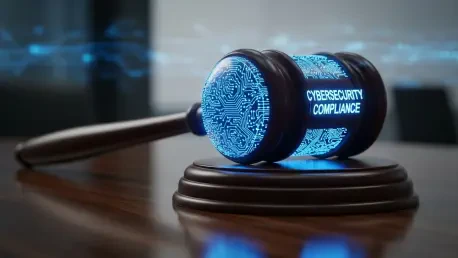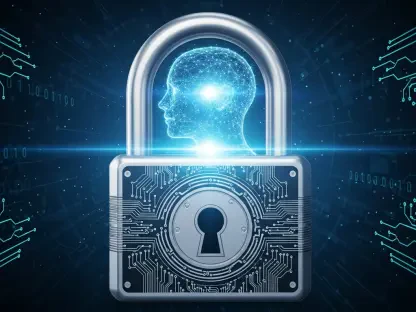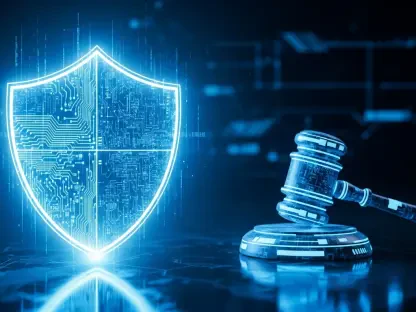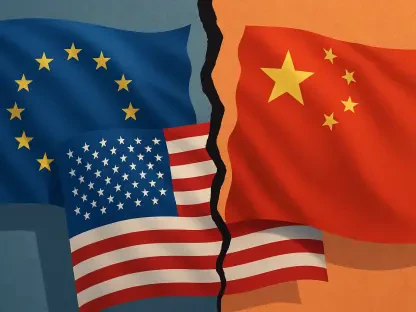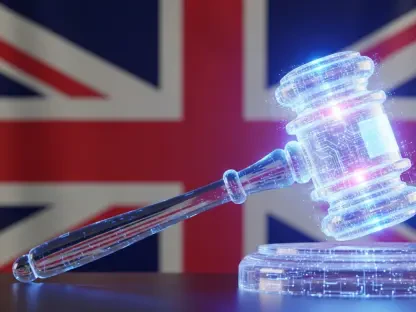Navigating the Digital Fortress of EU Regulations
In an era where cyber threats loom larger than ever, imagine a major European financial institution facing a devastating data breach, exposing millions of customer records due to lax security protocols, a scenario that is not far-fetched as cyberattacks have escalated in both sophistication and frequency across the continent. The European Union has responded with a robust suite of cybersecurity regulations, designed to fortify digital defenses and ensure businesses can withstand such onslaughts. This review delves into the technological frameworks and compliance mandates shaping cybersecurity in the EU, exploring how these regulations function as both shield and sword in the battle against digital vulnerabilities.
The regulatory landscape in the EU is not merely a checklist for businesses; it represents a fundamental shift in how technology intersects with accountability. With frameworks like the NIS2 Directive and the Cyber Resilience Act, organizations are compelled to embed security into every layer of their operations. These laws are not static; they evolve alongside emerging threats, demanding that companies stay agile in their technological adaptations. This analysis aims to unpack the critical components of these regulations and their implications for businesses operating in or interacting with the EU market.
Core Components of EU Cybersecurity Frameworks
NIS2 Directive: Expanding the Security Perimeter
The NIS2 Directive marks a significant expansion over its predecessor, encompassing a broader array of essential entities across sectors such as energy, healthcare, and finance. It targets not only large corporations but also small and medium-sized enterprises critical to societal functions. The directive mandates structured risk management practices, requiring businesses to identify vulnerabilities systematically and implement protective measures accordingly.
A key feature of NIS2 is its focus on supply chain security, compelling organizations to scrutinize the cybersecurity posture of their vendors and partners. Incident reporting is another cornerstone, with stringent timelines demanding notifications within 24 hours of detection. This rapid response mechanism ensures that threats are contained and communicated promptly to relevant authorities.
Moreover, NIS2 elevates executive accountability to unprecedented levels. Compliance is no longer just an IT department concern but a board-level priority, with leadership held responsible for lapses in security. This shift necessitates the integration of cybersecurity into strategic decision-making, aligning technological investments with regulatory expectations.
Cyber Resilience Act: Securing the Digital Product Lifecycle
The Cyber Resilience Act (CRA) introduces a pioneering approach by focusing on products with digital elements, spanning software and hardware. It imposes legally binding obligations on manufacturers, importers, and distributors, covering the entire lifecycle from design to post-market surveillance. The goal is to ensure that digital products entering the EU market are inherently secure.
Central to the CRA is the principle of security-by-design, mandating that security features are embedded from the inception of product development. Non-compliant products face severe consequences, including potential withdrawal from the market. This regulation pushes companies to prioritize cybersecurity as a core component of product innovation rather than an afterthought.
For businesses, the CRA translates into a need for robust testing and documentation processes to demonstrate compliance. It also underscores the importance of continuous monitoring after products are released, ensuring that vulnerabilities are addressed through updates and patches. This lifecycle approach is reshaping how technology firms design and support their offerings in the EU.
EU Cybersecurity Act: Certifying Trust in Technology
Under the EU Cybersecurity Act, a certification framework for ICT products, services, and processes has been established to standardize security benchmarks across the region. While certification is not universally mandatory, it increasingly serves as a critical factor in procurement decisions and vendor evaluations. Businesses offering digital infrastructure or cloud services find that certification can be a differentiator in competitive markets.
This framework facilitates trust by providing a verifiable measure of cybersecurity robustness. It allows organizations to demonstrate that their technologies meet rigorous EU standards, fostering confidence among clients and partners. As adoption grows, certification may transition from optional to essential for market access in certain sectors.
The implications for technology providers are clear: aligning with this certification process can enhance credibility and streamline business dealings. It also encourages a proactive approach to security, as companies must maintain compliance to retain certification status, driving ongoing improvements in their technological frameworks.
General Data Protection Regulation: Safeguarding Data Integrity
While primarily recognized for privacy protections, the General Data Protection Regulation (GDPR) imposes stringent requirements on data security. Organizations must ensure the confidentiality, integrity, and availability of personal data, implementing technical measures to prevent unauthorized access or loss. Failure to meet these standards can result in significant financial penalties.
A notable aspect of GDPR is its breach reporting timeline, requiring organizations to notify supervisory authorities within 72 hours of becoming aware of an incident. This urgency emphasizes the need for effective detection and response mechanisms, ensuring that breaches are addressed before they spiral into larger crises. The regulation applies across all industries, making it a universal benchmark for data protection.
For technology teams, GDPR compliance demands robust encryption, access controls, and monitoring systems to protect sensitive information. It also necessitates clear policies for data handling and incident management, aligning technological capabilities with legal obligations to mitigate risks effectively.
Additional Regulatory Layers: A Complex Ecosystem
Beyond the primary frameworks, other EU regulations like the Digital Services Act (DSA) and eIDAS add layers of compliance for specific digital activities. The DSA focuses on online platforms, enforcing transparency and accountability in content moderation practices. Meanwhile, eIDAS governs electronic identification and trust services, ensuring secure digital transactions across borders.
Sector-specific directives further complicate the landscape, particularly in industries like healthcare and finance, where additional security mandates apply. These regulations collectively shape a comprehensive ecosystem where technology must be aligned with multifaceted legal requirements. Businesses must navigate this intricate web to ensure full compliance.
The interplay of these frameworks underscores the need for integrated compliance strategies. Technology solutions must be adaptable to address overlapping obligations, ensuring that organizations can meet diverse regulatory demands without fragmenting their security efforts.
Technological Strategies for Compliance
Governance and Risk Management: Building a Foundation
Effective cybersecurity begins with structured governance, extending accountability beyond IT to include leadership, legal, and operational teams. Assigning clear roles for risk oversight and regulatory reporting ensures that security is embedded into the organizational fabric. A dedicated Data Protection Officer can be instrumental in coordinating these efforts.
Continuous risk assessments are vital, adapting to evolving threats and business changes rather than relying on outdated templates. Security policies must be dynamic, regularly reviewed, and rigorously enforced to meet regulatory scrutiny. This proactive stance helps identify gaps before they become liabilities.
Technology plays a pivotal role in supporting governance, with tools for risk mapping and compliance tracking becoming essential. Automated systems can streamline policy enforcement and provide real-time insights into security posture, enabling organizations to stay ahead of potential issues.
Technical Defenses: Fortifying Digital Barriers
Implementing robust technical controls is non-negotiable for compliance. Cloud firewalls act as a primary shield, filtering malicious traffic in distributed environments with scalability and adaptability. Configuring these systems to block suspicious patterns enhances protection across multiple platforms.
Encryption remains a cornerstone, securing data both at rest and in transit using recognized standards. Role-based access controls ensure that permissions align with job functions, minimizing insider risks. Regular patching is equally critical, addressing vulnerabilities before they can be exploited by attackers.
Monitoring systems must prioritize actionable alerts over noise, focusing on threats like unauthorized access or data exfiltration. Structured logging, paired with defined review processes, ensures that data is not only collected but also analyzed effectively, supporting compliance during audits or investigations.
Incident Management: Preparing for the Inevitable
Cyber incidents are a matter of when, not if, making preparation paramount. A documented response plan, outlining roles and responsibilities, transforms chaos into manageable action. Regular drills ensure that teams are familiar with protocols under pressure, reducing response times.
Meeting tight reporting deadlines, such as the 24-hour window under NIS2 or 72 hours under GDPR, requires streamlined processes. Pre-established communication channels with regulators, customers, and legal counsel prevent delays, even during off-hours or holidays. This readiness can mitigate the impact of incidents significantly.
Technology aids incident management through automated detection tools and response platforms. These systems can accelerate identification and containment, ensuring that organizations meet regulatory timelines while minimizing damage. Investing in such solutions is a strategic necessity for compliance.
Workforce Training: Empowering the Human Firewall
Employee awareness is a critical defense line, but generic training often falls short. Tailored programs that address specific threats, like phishing attempts relevant to the industry, resonate more effectively. Demonstrating the rationale behind security measures fosters engagement and adherence.
Technical staff and high-risk roles require specialized training, focusing on advanced threats and secure practices. Developers benefit from secure coding education, while HR and finance teams need guidance on targeted scams. This customized approach strengthens overall security posture.
Leadership must champion a security culture, adhering to policies themselves to set a precedent. When executives prioritize cybersecurity, it permeates the organization, embedding vigilance into daily operations. Technology can support training through interactive platforms, enhancing retention and impact.
Documentation and Improvement: Proving Compliance
Regulatory compliance hinges on evidence, making detailed documentation indispensable. Records of risk assessments, policy updates, incident responses, and technical controls must be maintained meticulously. These documents serve as proof of diligence during regulatory reviews.
Continuous improvement is equally important, with regular internal audits identifying areas for enhancement. External assessments can provide unbiased insights, particularly when internal resources are limited. Documentation must evolve alongside security practices to remain relevant.
Technology solutions like compliance management software can automate record-keeping and audit preparation. These tools ensure that evidence is organized and accessible, simplifying the process of demonstrating adherence to EU standards during inspections or inquiries.
Reflecting on the Compliance Journey
Looking back, the exploration of EU cybersecurity compliance revealed a landscape where technology and regulation are deeply intertwined. The NIS2 Directive, Cyber Resilience Act, and GDPR, among others, stood as pillars that not only mandated security but also reshaped how businesses approached digital resilience. These frameworks proved to be more than legal obligations; they were catalysts for innovation in security practices.
The path forward demanded actionable steps, starting with the integration of compliance into core business strategies rather than treating it as a peripheral task. Organizations needed to invest in scalable technologies, such as automated monitoring and compliance tools, to keep pace with regulatory evolution. Prioritizing employee training and governance structures emerged as equally vital to sustain long-term adherence.
As cyber threats continued to advance, businesses had to anticipate further tightening of regulations between now and 2027, preparing for enhanced enforcement and new mandates. Collaborating with industry peers and leveraging third-party expertise offered a way to navigate this complex terrain, ensuring that compliance became a competitive edge rather than a burden. The journey underscored that robust cybersecurity was a foundation for trust and operational success in the EU market.
